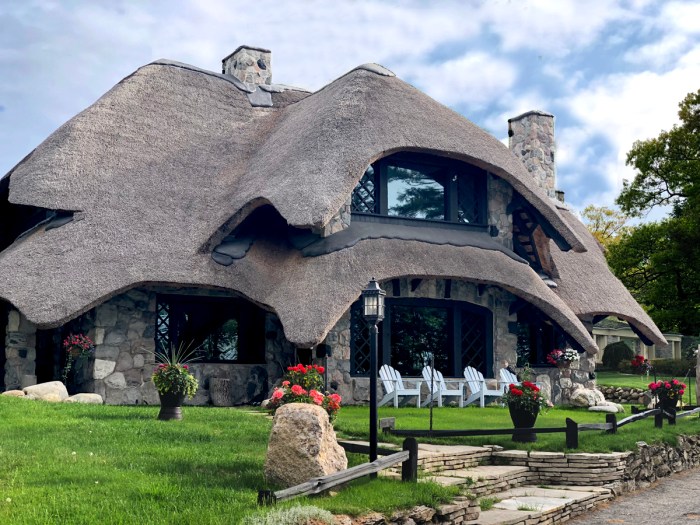What is a thatcher in medieval times? Thatchers played a crucial role in medieval society, providing essential roofing services that protected buildings from the elements. This article delves into the world of medieval thatchers, exploring their role, responsibilities, and the cultural significance of their craft.
Thatchers were skilled artisans responsible for constructing and maintaining thatched roofs, a common feature of medieval architecture. Their work involved using natural materials such as straw, reeds, and heather to create durable and weather-resistant coverings for homes, churches, and other structures.
1. Definition and Etymology
A thatcher is a skilled artisan who specializes in constructing and repairing roofs made of natural materials, primarily thatch. The term “thatcher” derives from the Old English word “þæc” meaning “to cover” or “to roof,” highlighting the primary function of these craftsmen in medieval society.
Thatchers played a vital role in medieval architecture, providing essential shelter and protection from the elements. Their work was highly valued and contributed to the aesthetic appeal of medieval buildings.
2. Role and Responsibilities

The primary role of thatchers in medieval times was to construct and maintain thatched roofs. This involved sourcing and preparing suitable materials, such as straw, reeds, or heather, and using traditional techniques to weave and secure them onto roof structures.
Thatchers were also responsible for repairing and maintaining existing thatched roofs, ensuring their durability and weather resistance. They possessed specialized knowledge and skills to assess damage, replace worn or damaged thatch, and prevent leaks or drafts.
3. Materials and Techniques

Medieval thatchers utilized a variety of natural materials, including straw from wheat, rye, or barley; reeds harvested from wetlands; and heather from moorlands. These materials were carefully selected for their insulating properties, durability, and resistance to fire and water.
Thatching techniques varied depending on the region and available materials. However, common methods included layering and overlapping the thatch to create a dense and weatherproof covering. Thatchers used specialized tools, such as thatching needles and hooks, to secure the thatch and create a uniform and aesthetically pleasing finish.
4. Social and Economic Status

The social status and economic standing of thatchers in medieval society varied depending on the region and period. In some areas, thatchers were highly respected and considered skilled artisans, while in others they were perceived as lower-class laborers.
Factors such as the availability of skilled thatchers, the demand for their services, and the economic conditions of the time influenced their income and working conditions. Thatchers often worked independently or as part of small teams, and their earnings could fluctuate depending on the size and complexity of the projects they undertook.
5. Regional Variations
Thatching practices varied across medieval Europe due to regional climate, availability of materials, and cultural influences. In northern regions with heavy rainfall, thatched roofs were typically steeply pitched and covered with thick layers of straw or reeds to shed water effectively.
In drier regions, thatched roofs were often flatter and made of lighter materials, such as heather or straw. Cultural traditions and local building styles also influenced the appearance and construction techniques of thatched roofs, resulting in distinct regional variations.
6. Cultural and Artistic Significance
Thatched roofs became symbols of tradition and rural life in medieval times. They were associated with the countryside, agriculture, and the simple lifestyles of peasants and farmers. The intricate patterns and textures created by thatchers added aesthetic value to buildings, enhancing the visual appeal of medieval villages and towns.
Thatched roofs also held cultural significance, representing the continuity of traditional building techniques and the connection between medieval society and its natural surroundings.
7. Modern Applications: What Is A Thatcher In Medieval Times

Thatching continues to be practiced in contemporary architecture, albeit with adaptations to meet modern building codes and standards. Traditional techniques are combined with innovative materials and methods to create durable and aesthetically pleasing thatched roofs.
Modern thatching materials include synthetic fibers, such as nylon or polypropylene, which offer increased durability and fire resistance compared to natural materials. Thatchers also use modern tools and equipment to improve efficiency and safety.
FAQ Compilation
What materials did medieval thatchers use?
Medieval thatchers primarily used natural materials such as straw, reeds, heather, and rushes to construct thatched roofs.
How long did thatched roofs typically last?
Well-maintained thatched roofs could last for several decades, providing durable protection from the elements.
What was the social status of thatchers in medieval society?
Thatchers were generally considered skilled artisans and held a respectable position in society, although their income and working conditions could vary depending on factors such as location and economic conditions.